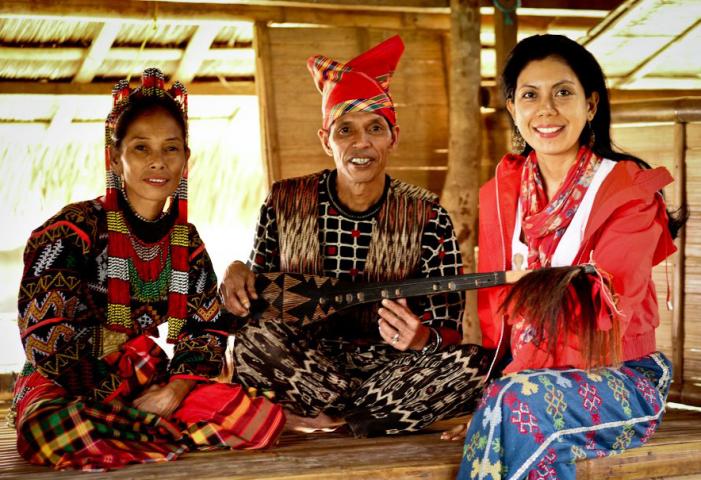WASHINGTON – The World Bank (WB) has tagged the Philippines as a model in providing a social safety net that cushions the impact of global financial and economic problems.
The Philippines, for its part, wants to improve its Pantawid Pamilyang Pilipino Program (4P) by lengthening the period that beneficiaries receive cash.
“We at the Bank have helped extend conditional cash transfer programs to about 40 other countries. So we had the Philippines (Social Welfare) secretary here and they have expanded to three million families,” World Bank president Robert Zoellick said on Thursday, at the start of the 2012 WB-IMF Spring Meetings here.
“Let us focus on basic safety nets for every country to deal with the volatility and uncertainty, because the other lesson we learned is if you wait until the crisis, it is too late,” Zoellick added.
The Philippines began its 4P or the conditional cash transfer program in 2008, targeting to regularly provide cash to 5.2 million households.
“In the General Appropriations Act, we were given P39 million to add 700,000 beneficiaries this year and we have done so,” Social Welfare Secretary Corazon Soliman told The STAR in a forum at the sidelines of the meetings.
“We are on target and we are now at three million households. What we are doing now is strengthening and ensuring that we are doing well,” Soliman said.
The Department of Social Welfare and Development wants to reach 5.2 million households in 2015.
But new plans are under way for the safety net program of the country.
“We are reviewing it to increase the age because we want to make it 0-18 years old. That would require additional funds so that is what we are looking at and we are doing some computation if we can afford it,” Soliman said.
To date, 4P helps keep 0-14-year-old children in school through $7 per month aid per child, with a maximum of three children per household.
“We are looking at the need for children to finish high school,” Soliman said.
Fourteen-year-old children are usually in second or third year of the four-year secondary school curriculum.
Under the K+12 basic education program that will be implemented this year, students will have four years of junior high school (Grades 7 to 10) and two years of senior high school (Grades 11 to 12).
Soliman said the department can implement its lengthened aid as early as 2014 if there is sufficient funding, which is still subject to approval of the Department of Budget and Management.
The World Bank said that worldwide, three out of five people in developing countries and four of five people in the world’s poorest countries lack safety net coverage.
The World Bank said countries are struggling to protect their most vulnerable citizens from the negative impacts of global financial volatility and food and fuel price hikes.
“Effective safety net coverage overcomes poverty and promotes economic opportunity and gender equality by helping people find jobs, cope with economic shocks, and improve the health, education, and wellbeing of their children,” Zoellick said.
“There is a push for the national government to deliver education, health and infrastructures well because people need it,” Soliman said.
The World Bank said expanding cost-effective safety nets like cash transfers, food assistance, public works programs, and fee waivers help countries respond to crises.
“It is not a question of whether countries can afford to have safety net programs... It is whether we can afford not to have them,” said Ato Sufian Ahmed, Minister of Finance and Economic Development of Ethiopia, where the Productive Safety Nets Program has protected millions from famine.
The World Bank Group support for social protection and labor programs reached $11.5 billion in 83 countries during the last decade.
Serious threats
Meanwhile, in its Global Monitoring Report (GMR) 2012, the World Bank said developing nations continue to face serious threats to the mortality levels of child and mother, as well as reducing levels of poverty and potable water.
The World Bank said that the world is significantly off-track on the Millennium Development Goals (MDG) to reduce mortality rates of mothers and children under five.
“As a result, these goals will not be met in any developing region by 2015. Progress is slowest on maternal mortality, with only one-third of the targeted reduction achieved thus far. Progress on reducing infant and child mortality is similarly dismal, with only 50 percent of the targeted decline achieved,” the report stated.
WB chief economist and senior vice president Justin Yifu Lin said that high and volatile food price works against the attainment of many MDGs, as they erode consumer purchasing power and prevent millions of people from escaping poverty and hunger.
“Dealing with food price volatility must be a high priority, especially as nutrition has been one of the forgotten MDGs,” Lin added.
The report stressed that a fragile global economy would slow down human development goals.
The report estimated that 1.02 billion will remain in extreme poverty in 2015.
“According to our projections, an estimated 1.02 billion people will still be living in extreme poverty in 2015.
Clearly, assistance must be leveraged in new ways if we are to improve food security and nutrition, particularly for the poor and vulnerable,” said Jos Verbeek, lead author of the report and lead economist for the World Bank.
Regional progress towards the MDGs is uneven.
The report said that while upper middle-income countries are on track to achieve most targets, low-income or fragile countries are lagging, with only two goals achieved or on-track.
What is worse is that commodity prices remain volatile while food prices are also declining, it said.
The World Bank, however, said that complicating matters is that development assistance is starting to dry up or shrink due to the crisis as well as the strengthening of some currencies in the Asian region. –
With Ted Torres












